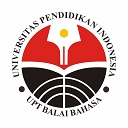The Speech Act of Complaining in Japanese Anime
Abstract
Keywords
Full Text:
PDF (IND)References
Aprianti, Y. (2018). Tindak Tutur Ilokusi Direktif “Memerintah” dalam Serial Drama Kodo Buru Dokuta Heri Kinkyu Kyumei (Skripsi, Universitas Jenderal Soedirman). Diakses dari https://apps.spmb.unsoed.ac.id/index.php?r=artikelilmiah/view&id=22798
Benning, M. A., & Parwati. (2018). Strategi tindak tutur mengeluh dengan menyalahkan tindakan dalam drama Suki na Hito ga Iru Koto. Japanology, 6(2), 154-166. Diakses dari http://repository.unair.ac.id/id/eprint/76367
Chaer, A. (2014). Linguistik Umum. Jakarta: Rineka Cipta.
Chamalah, E., & Turahmat. (2016). Tindak tutur ekspresif pada bak truk sebagai alternatif materi ajar pragmatik. Jurnal Bahastra, 35 (2), 27-40. http://dx.doi.org/10.26555/bahastra.v35i2.4859
Chino, N. (2008). Partikel Penting Bahasa Jepang (Edisi Terjemahan oleh Nazir Ramli). Jakarta: Kesaint Blanc.
Leech, G. (1993). Prinsip-Prinsip Pragmatik (Edisi Terjemahan Oleh M. D. D. Oka). Jakarta: Penerbit Universitas Indonesia Press.
Nadar, F.X. (2008). Pragmatik & Penelitian Pragmatik. Yogyakarta: Universitas Gadjah Mada.
Ngusman, W. A. (2015). Tindak tutur ekspresif Mario Teguh dalam acara “Golden Ways”. Jurnal Bahasa, Sastra dan Pembelajaran, 2 (1), 99-113. Diakses dari https://jurnal.unimed.ac.id/2012/index.php/sasindo/article/view/1603/1311
Nurgiyantoro, B. (2002). Teori Pengkajian Fiksi. Yogyakarta: Gadjah Mada University Press.
Nurhasanah, G. (2010). Tindak Tutur Mengeluh dalam Bahasa Jepang. Universitas Indonesia.
Putrayasa, I. B. (2014). Pragmatik. Yogyakarta: Graha Ilmu.
Sutedi, D. (2011). Dasar-dasar Linguistik Bahasa Jepang. Bandung: Humaniora.
Trosborg, A. (1995). Interlanguage Pragmatics: Request, Complaints and Apologies. Berlin: Mouton de Gyuter.
Winoto, D. R., & Artanto, B. (2012). Tindak Tutur Mengeluh Bahasa Jepang Studi Kasus dalam Film Great Teacher Onizuka (Skripsi, Universitas Dian Nuswantoro). https://doi.org/10.33633/lite.v14i1.1975
Yule, G. (1996). Pragmatics. New York: Oxford University Press.
苦情とクレームと文句と抗議. (2018). Diakses dari https://chigai-allguide.com/苦情とクレームと文句と抗議/
DOI: https://doi.org/10.17509/japanedu.v5i2.28373
Refbacks
- There are currently no refbacks.
Copyright (c) 2020 JAPANEDU: Jurnal Pendidikan dan Pengajaran Bahasa Jepang

This work is licensed under a Creative Commons Attribution-ShareAlike 4.0 International License.
 Published by:
Published by: Department of Japanese Language Education, Faculty of Language and Literature Education
Universitas Pendidikan Indonesia
 Online ISSN: Online ISSN:2528-5548 |

JAPANEDU: Jurnal Pendidikan dan Pengajaran Bahasa Jepang (e-ISSN:2528-5548) lisenced under a Creative Commons Attribution-ShareAlike 4.0 Internasional (CC BY-SA 4.0)


